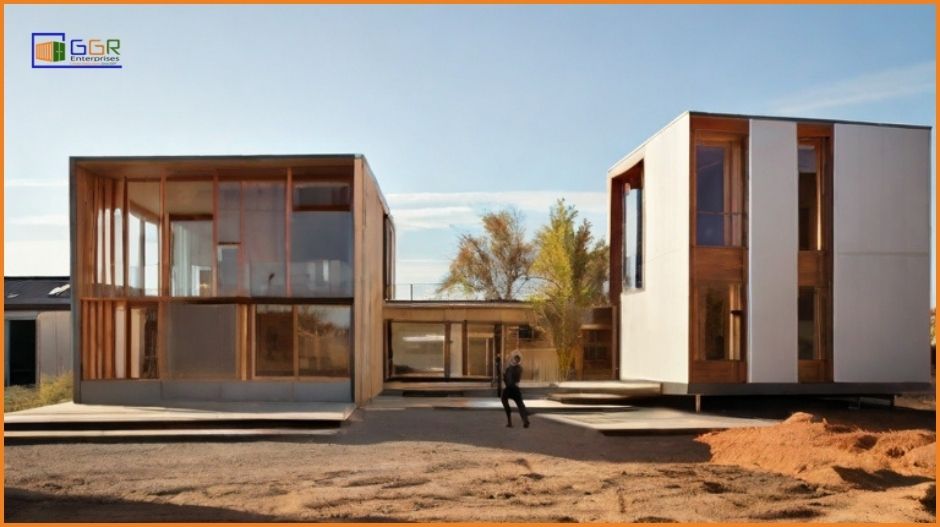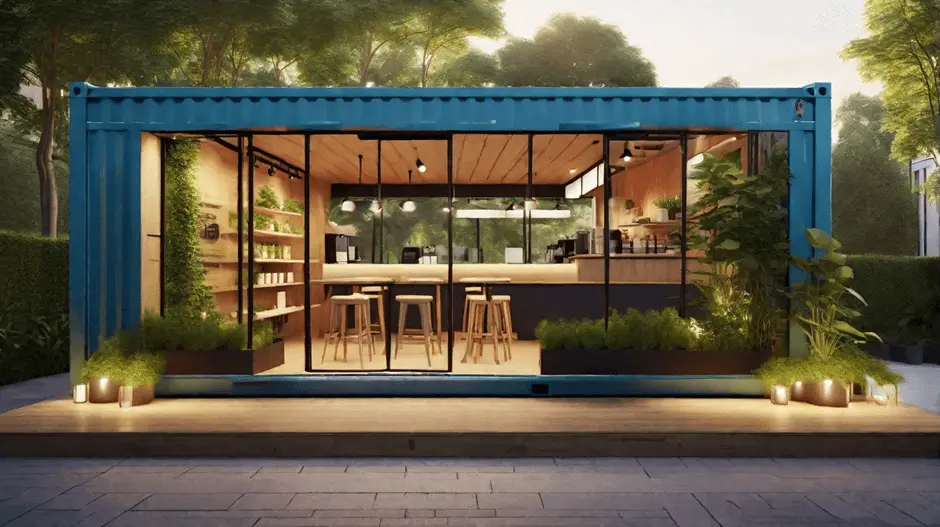Shipping Container Cafe Shop Design Ideas

Let's start with the concept of modular building. Instead of viewing modular construction as a product in and of itself, consider it a building process. This method is constructing a structure off-site, such as an apartment, office, or even a house, utilizing shipping containers. The building process takes place in a controlled environment and follows to the same norms and standards as traditional construction. However, modular construction has the advantage of being completed in a significantly quicker time. It entails constructing construction pieces in modules, which are then assembled on-site.
Traditional construction methods include transporting wood studs or boards such as 2x4s and flooring to the site, where workers cut and construct them to complete the structure. In contrast, individuals who choose off-site building, including modular construction, make use of major ports and existing transportation routes to transfer the modular to the intended place.
Introduction of modular construction
In recent years, modular construction, often known as prefabricated construction, has gained popularity. This ground-breaking method of building involves manufacturing the modules in controlled assembly conditions before delivering and installing them on-site. The following article will highlight the benefits and drawbacks of modular building, describing both the benefits and the potential drawbacks, and showing why this emerging trend is gaining momentum.
Pros of Modular Construction:
- Efficiency and Speed:
Modular construction offers significant benefits in terms of efficiency and speed. Pre-fabricated parts can be created in a controlled environment, resulting in improved production processes and reducing the risk of delays due to weather or site disruptions. Such short production durations allow for a 50% increase in performance over traditional construction methods.
- Enhanced Quality Control:
Through the modular manufacturing process, in the factories equipped with modern equipment the modular construction guarantees the higher standards of quality control. All devices come through detailed inspections and tough testing, reducing the probability of structural flaws or shortcomings. Quality control is the main emphasis that ends up having safer and more reliable structures.
- Sustainability:
Modular construction is a green alternative to conventional construction. The utilization of materials effectively and well-structured manufacturing reduces waste production. Moreover, these can also be recycled and reused when buildings are no longer used which invariably reduces the environmental impact to be reduced. This sustainable approach follows the line of the growing demand for environmentally friendly construction principles.
- Cost Savings:
Prefabricated construction offers the opportunity of cost reduction because of its factory related cheap type of assembly. Factors like a decrease in labor costs, the minimization of material waste as well as the shortening of project duration lead to overall project cost reduction. Furthermore, the capacity to construct modularly in a scalable manner allows for bulk purchasing and the ability to bargain for lower rates on materials, thereby, further reducing costs.
Cons of Modular Construction:
- Limited Design Flexibility:
Modular construction requires specific design standards for manufacturing and shipping. Simultaneously, technology offers up limitless design possibilities. However, some architectural and artistic features can be difficult to construct within the limitations of simplicity.
- Transportation Challenges:
Combining units at building sites requires precise logistics and coordination. Transportation issues may arise when large or irregularly shaped modules are used on regular routes or with specialized equipment. As a result, logistical issues must be considered throughout project design to ensure that logistics and assembly run well.
- Initial Financing Obstacles:
The long-term cost reduction through modular construction can be helpful to developers but the initial costs can be a barrier. The difference between the financing of modular projects, as opposed to conventional construction, is the initial capital investment which will need to be funded in part before the project completion, owing to the need to pay for the production. Nevertheless, because the industry grows, financing options will be increasingly accessible.
- Limited Customization:
Modular building offers standardization and repetition opportunities, nonetheless, it might have fewer customization options than traditional construction. Clients who look for a more specific or even unique building design could face limitations while working with prefabricated modules.
Container Homes as Modular Construction:
Container houses or shipping container homes use the shipping boxes as the main construction components of housing units. The shipping containers, usually made of steel, are converted into living quarters, functional and aesthetically pleasing at the same time. Although most container houses exhibit some of the features of modular design, they are not always considered as modular units.
Modular building means the assembling of pre-made modules or components in a pre-set factory environment in a systematic way. These modules, that are adaptable to suit different layout styles, are then shipped to the site for final mounting. However, containers homes for the most part use one or more containers as their primary structural elements, but they are modifed so as to fit the specific layout and design.
The Advantages of Modular and Prefabricated Construction:
Container homes and modular construction are not the same, but they have some advantages in common that may make them attractive in the area of prefabricated construction.
- Cost-effective: Container homes are typically an affordable alternative to conventional construction. Also, modular construction makes the building process easier which decreases the labor costs and minimizes the material waste.
- Time-efficient: Modular construction, which includes container housing, permits simultaneous on-site and off-site activities. The production of factory-built modules or containers is done simultaneously while the site preparation and utility connections are in progress. Hence, the outcome is a shorter construction schedule.
- Sustainability: The use of container homes encourages the reuse of materials and the reduction of environmentally harmful effects of construction. units and containers can be recycled and reused, which has a positive impact on the environment.
- Design Flexibility: Modular construction and container homes use design flexibility. Units or containers can be modified and linked to form types of living spaces that meet various architectural styles.
Conclusion:
Modular construction which has unique advantages such as efficiency, quality control, sustainability, and cost-effectiveness is revolutionizing the construction industry. However, it is important to recognize the limitations such as lack of design flexibility, transport problems, initial financing difficulties, and customization problems. A responsible and thorough planning process, which weighs the pros and cons of modular construction, will give developers the necessary tools for making sound choices and using the full potential of modular construction, also known as prefabricated construction.
